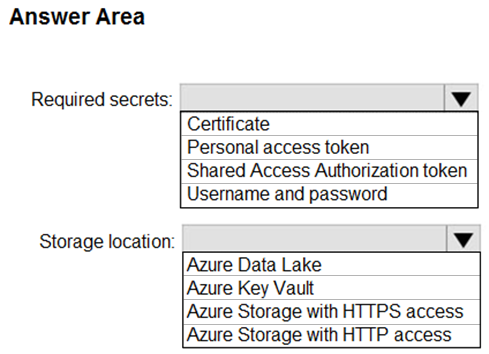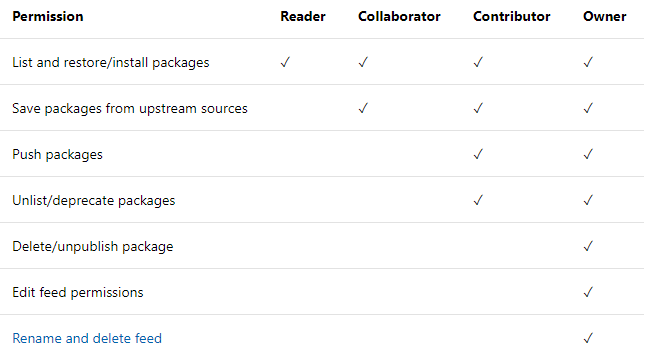Reference:
https://docs.microsoft.com/en-us/appcenter/sdk/getting-started/ios
https://docs.microsoft.com/en-us/appcenter/sdk/getting-started/ios#42-add-the-startwithservices-method
https://docs.microsoft.com/en-us/appcenter/sdk/#app-center-analytics
https://docs.microsoft.com/en-us/appcenter/sdk/#app-center-crashes
Question 2:
HOTSPOT –
How should you configure the release retention policy for the investment planning applications suite? To answer, select the appropriate options in the answer area.
NOTE: Each correct selection is worth one point.
Hot Area:

Correct Answer:

Explanation:
Scenario: By default, all releases must remain available for 30 days, except for production releases, which must be kept for 60 days.
Box 1: Set the default retention policy to 30 days
The Global default retention policy sets the default retention values for all the build pipelines. Authors of build pipelines can override these values.
Box 2: Set the stage retention policy to 60 days
You may want to retain more releases that have been deployed to specific stages.
Question 3:
HOTSPOT –
You need to configure a cloud service to store the secrets required by the mobile applications to call the share pricing service.
What should you include in the solution? To answer, select the appropriate options in the answer area.
NOTE: Each correct selection is worth one point.
Hot Area:

Box 1: Username and pasword
The question should be relate to “The mobile applications must be able to call the share pricing service of the existing retirement fund management system. Until the system is upgraded, the service will only support basic authentication over HTTPS.”
Basic authentication is username and password
Box 2: Azure Key Vault
Question 4:
DRAG DROP –
Which package feed access levels should be assigned to the Developers and Team Leaders groups for the investment planning applications suite? To answer, drag the appropriate access levels to the correct groups. Each access level may be used once, more than once, or not at all. You may need to drag the split bar between panes or scroll to view content.
NOTE: Each correct selection is worth one point.
Select and Place:
Correct Answer:

Box 1: Reader –
Members of a group named Developers must be able to install packages.
Feeds have four levels of access: Owners, Contributors, Collaborators, and Readers. Owners can add any type of identity-individuals, teams, and groups-to any access level.
Box 2: Owner –
Members of a group named Team Leaders must be able to create new packages and edit the permissions of package feeds.

Question 5:
To resolve the current technical issue, what should you do to the Register-AzureRmAutomationDscNode command?
A. Change the value of the ConfigurationMode parameter.
B. Replace the Register-AzureRmAutomationDscNode cmdlet with Register-AzureRmAutomationScheduledRunbook
C. Add the AllowModuleOverwrite parameter.
D. Add the DefaultProfile parameter.
Change the ConfigurationMode parameter from ApplyOnly to ApplyAndAutocorrect.
The Register-AzureRmAutomationDscNode cmdlet registers an Azure virtual machine as an APS Desired State Configuration (DSC) node in an Azure Automation account.
Scenario: Current Technical Issue
The test servers are configured correctly when first deployed, but they experience configuration drift over time. Azure Automation State Configuration fails to correct the configurations.
Azure Automation State Configuration nodes are registered by using the following command.
Question 6:
Which branching strategy should you recommend for the investment planning applications suite?
A. release isolation
B. main only
C. development isolation
D. feature isolation
Scenario: A branching strategy that supports developing new functionality in isolation must be used.
Feature isolation is a special derivation of the development isolation, allowing you to branch one or more feature branches from main, as shown, or from your dev branches.
When you need to work on a particular feature, it might be a good idea to create a feature branch.
Incorrect Answers:
A: Release isolation introduces one or more release branches from main. The strategy allows concurrent release management, multiple and parallel releases, and codebase snapshots at release time.
B: The Main Only strategy can be folder-based or with the main folder converted to a Branch, to enable additional visibility features. You commit your changes to the main branch and optionally indicate development and release milestones with labels.
C: Development isolation: When you need to maintain and protect a stable main branch, you can branch one or more dev branches from main. It enables isolation and concurrent development. Work can be isolated in development branches by feature, organization, or temporary collaboration.
Question 7:
What should you use to implement the code quality restriction on the release pipeline for the investment planning applications suite?
A. a pre-deployment approval
B. a deployment gate
C. a post-deployment approval
D. a trigger
Deployment gate – You want to ensure there are no active issues in the work item or problem management system before deploying a build to a stage – “Pre-deployment gates”.
Reference: https://docs.microsoft.com/en-us/azure/devops/pipelines/release/approvals/approvals
Question 8:
HOTSPOT –
Where should the build and release agents for the investment planning applications suite run? To answer, select the appropriate options in the answer area.
NOTE: Each correct selection is worth one point.
Hot Area:
A source control system, also called a version control system, allows developers to collaborate on code and track changes. Source control is an essential tool for multi-developer projects.
Box 2: A hosted service –
To build and deploy Xcode apps or Xamarin.iOS projects, you’ll need at least one macOS agent. If your pipelines are in Azure Pipelines and a Microsoft-hosted agent meets your needs, you can skip setting up a self-hosted macOS agent.
Scenario: The investment planning applications suite will include one multi-tier web application and two iOS mobile applications. One mobile application will be used by employees; the other will be used by customers.


